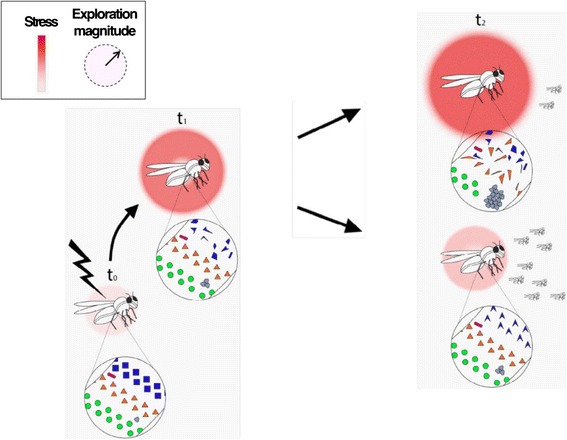Fig. 3.

Potential realization of adaptive improvisation by host-microbiome interactions in animals (illustrated here using flies as an example). A novel stress induces rapid changes in the composition of bacterial species, as well in the intrinsic properties of individual bacteria, their spatial distributions and their interactions. The characteristic rate and magnitude of changes (represented by the diameter of the color-coded halos) tend to increase with the strength of the stress (displayed in red color code). Many of these changes occur during the lifetime ‘T’ of an individual (i.e. t2 - t0 < ‘T’). The modified microbiome influences the state and properties of the host, potentially increasing or alleviating the stress in the host and the holobiont. Changes which alleviate the stress also reduce the drive for further changes, thereby decreasing the characteristic magnitude of subsequent changes (smaller halo). Bacterial species are represented by specific colors. Variation within a particular species (e.g. physiological, epigenetic and certain genetic changes) is indicated by shape modifications without a change in color
